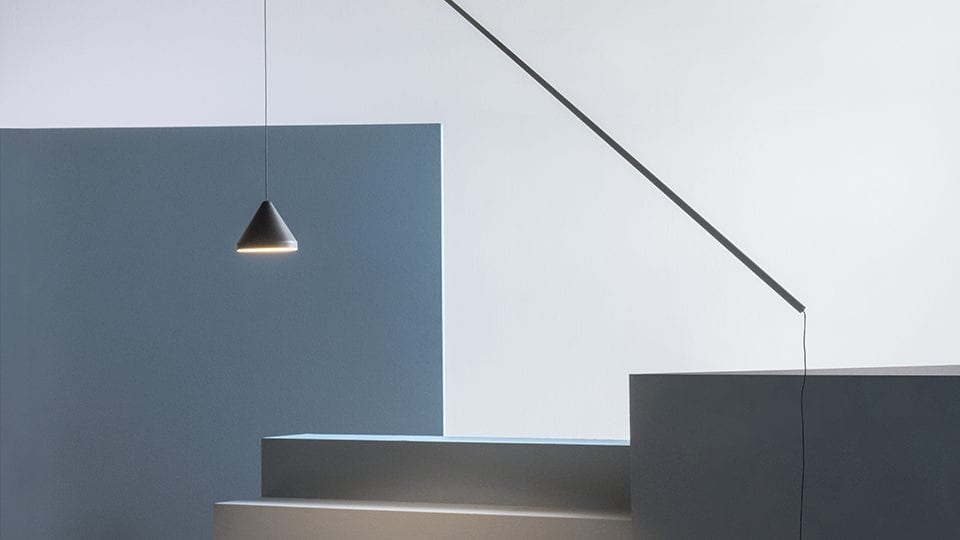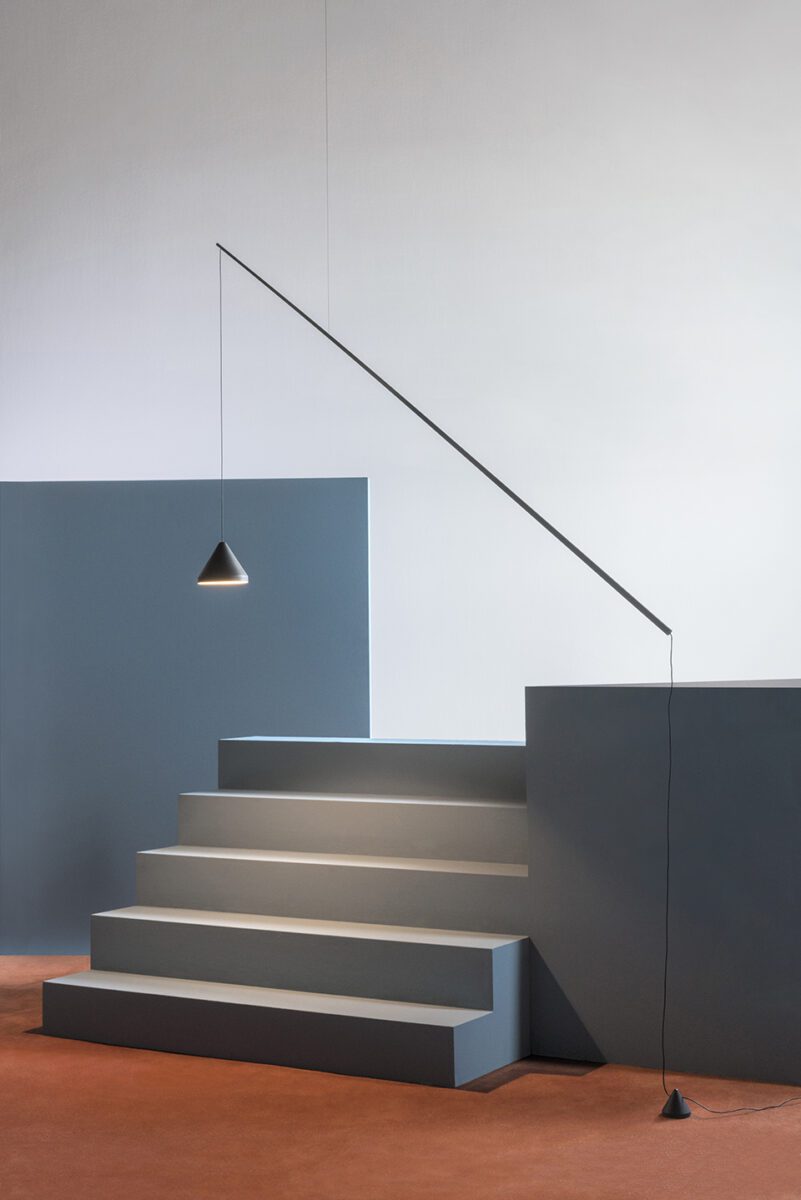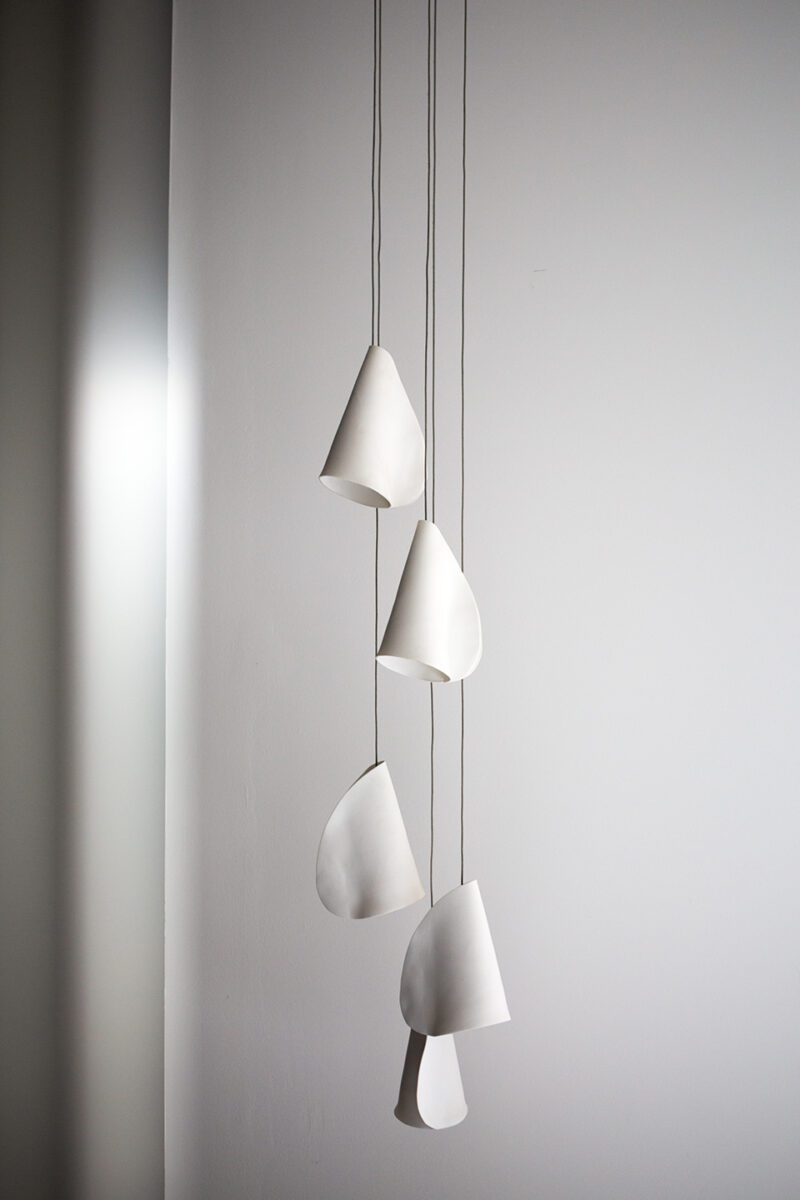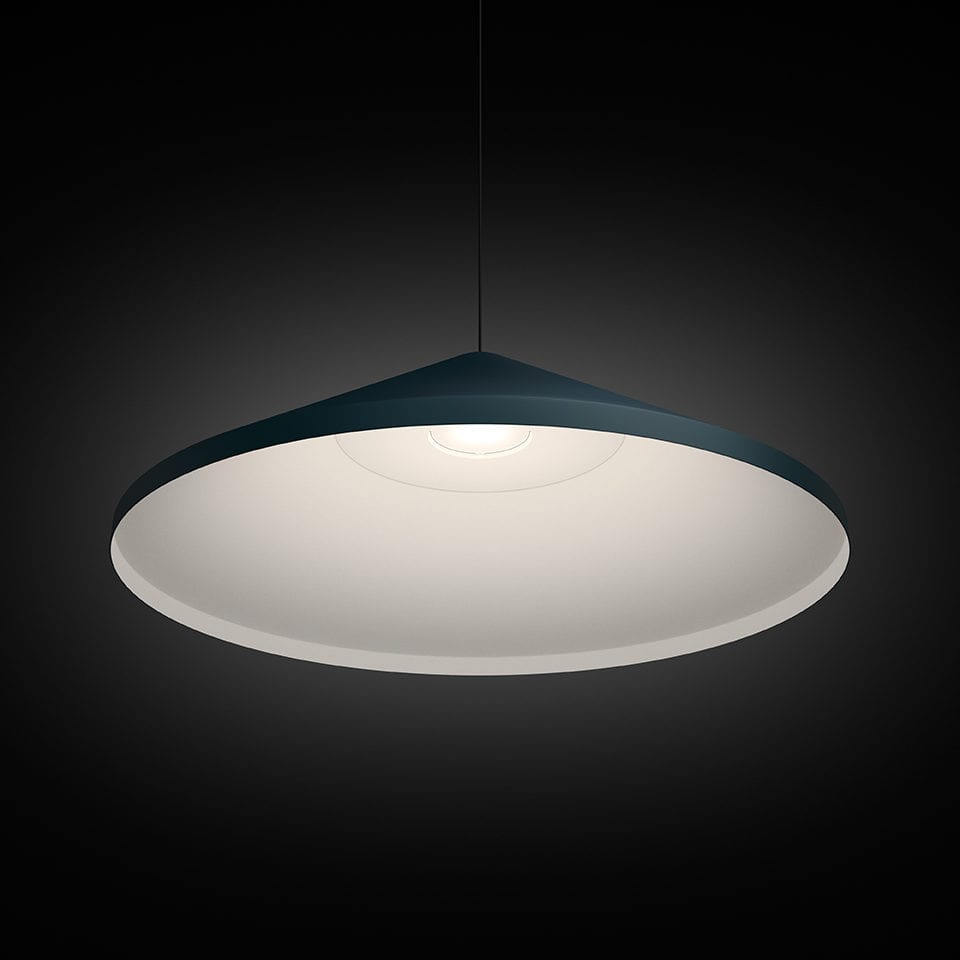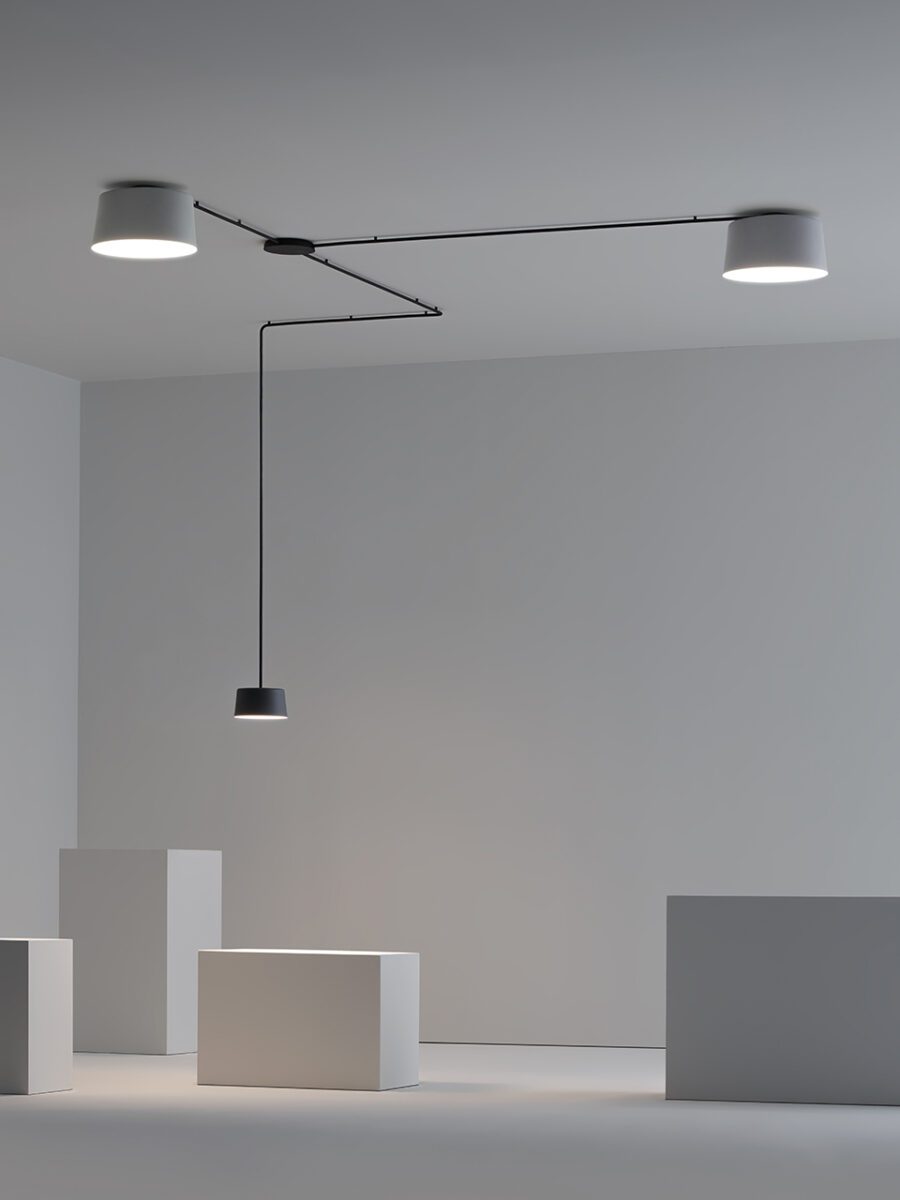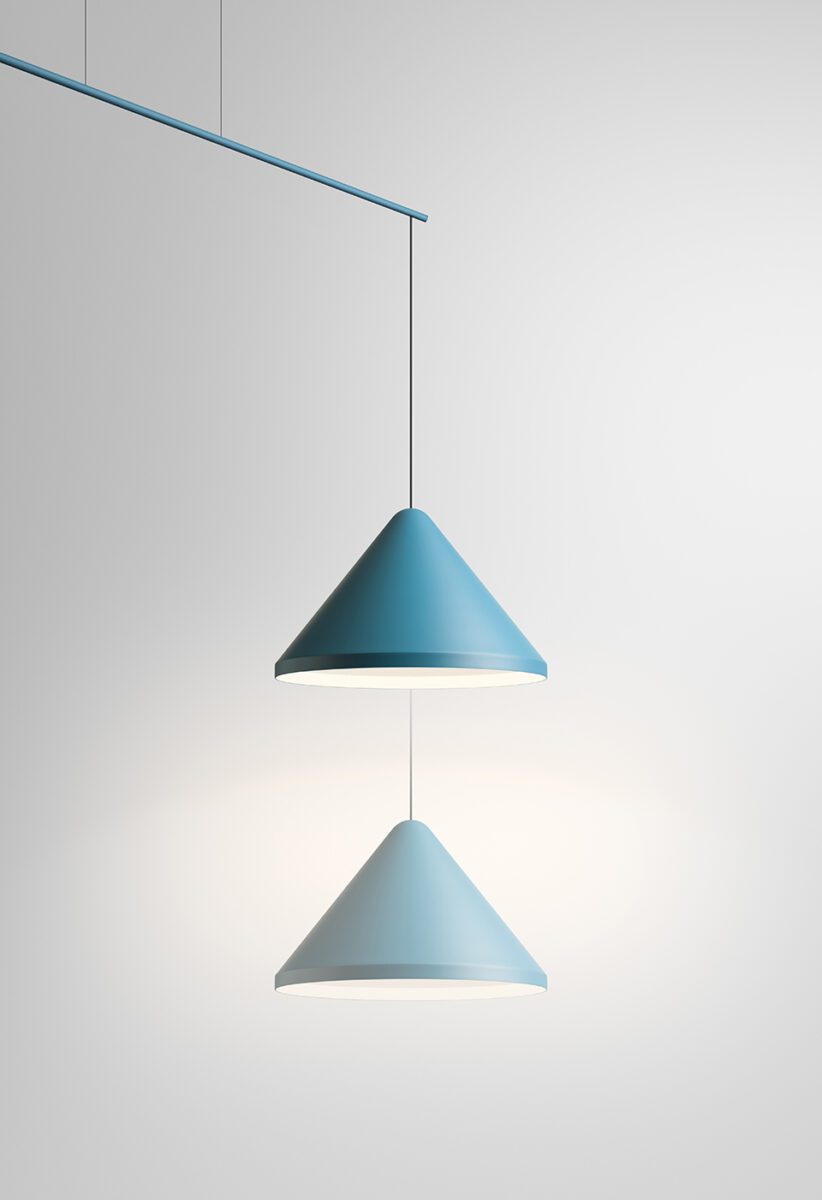Cutting-edge lighting brands engage with a number of innovative trends; low-impact and responsibly-sourced collections play with audience perception.
This year’s Euroluce exhibition – the biennial lighting fair at Salone del Mobile, Milan – presents bold, new ideas. Interactive carousels, Art Deco inspiration, blown glass that looks like fabric and lamps that mimic the morning sun. The 2019 designers are going for both fanciful, esoteric creations and hyper-functional indoor, outdoor and industrial options. They are transforming not just the way we experience architecture, but also how we feel in relation to the space. With concerns about the world hurtling toward a veritable doomsday of vanishing icebergs and rising sea levels, sustainability is at the heart of new collections presented this year. It’s a concern that cuts across a variety of disciplines in the design world. Function and aesthetics become one – or at least such is the stated goal.
Euroluce – for its 30th edition – features 421 brands at the peak of their game including Artemide, Bert Frank, Bocci, Swarovski and Vibia. As per recent years, LEDs are dominating the playing field, along with associated technologies such as OLEDs – in which a film of organic compounds is placed between electrodes and intelligent control systems, or “smart home” domotics. The materials are often locally sourced and recycled, which has the benefit of translating to major energy savings.
Some appliances display an increasingly dizzying array of integrated functions – such as wireless connectivity, adaptive intelligence, higher performance sensors and systems that regulate colour and temperature. Solar energy is also powering some of the human-centric pieces, focused on enhancing individual experiences and wellbeing. Making bold promises for the industry, these indelible tools tap into the therapeutic potential of light by carefully modulating intensity and direction. Where a dark, poorly lit space can decrease a sense of inter-connectivity, the flexibility and reliability of more advanced LEDs can energise and improve health from the inside out.
This is a key element for this year’s exhibitors. However, the brands are also coming up with surprising solutions to responsible practices. Milan-based Artemide is one such example. The Italian outfit has collaborated with huge pioneers like Zaha Hadid, Naoto Fukasawa, Jean Nouvel and Herzog & De Meuron – stressing that “product efficiency is the first tool for a correct energy balance.”
At its most basic, this means it is necessary to perform at the highest level whilst using the fewest materials and consuming as little energy as possible. “It is increasingly important, today more than ever, to respect our limited resources. We must confront ourselves with a new vision. We need to work through the lens of a humanism that not only connects us to our everyday needs but also to the community and the future of the planet,” said Artemide Vice President Carlotta de Bevilacqua. She foresees “interactive” items as a concept that will soon redefine the relationship between people and their wider surroundings. This is the next step towards bridging the gap between the organic and digital worlds, using crossdisciplinary practices.
Euroluce’s 2019 brands showcase projects that respond to individual behaviours and feelings – putting the user first. “Everyone can choose their own item, modelling it in a more flexible and qualitative way by varying the rhythm of light and shadow,” explains de Bevilacqua. In pieces like Ameluna, injection moulding is used in thermally conductive plastic to incorporate LED heatsink functions in the lamp body. Meanwhile, the aptly-named Silent Field features acoustic fabric, and the silicon-based Soft Alphabet can be shaped into all sorts of dynamic forms that still boast high mechanical and thermal stress resistance.
Yet despite all these advances, companies are still harking back to the past as technical materials mix freely with the traditional. Hand-blown glass, for example, is still being made using age-old craft techniques at a factory in Venice. The glass encloses an RWB (red-white-blue) system seen as an alternative to the harsher and more widespread RGB (red-green-blue) grading. Direct, controlled emissions of colours mix with white diffused light that can be controlled separately – creating a system that actually helps plants to grow. There’s also a subtle play of transparency and opacity achieved through vacuum metallisation – a process which melts metal down to vapour to be sprayed as a film coating onto items. Collections realised by Neri&Hu, for example, reinterpret East Asian traditional aesthetics with contemporary flair using brushed brass and white glass.
In another section, Tel Aviv-born artist Arik Levy has come on board to make a series of products for Spanish brand Vibia. For this, Levy has been inspired by the spontaneous and shifting phases of the aurora borealis. The resulting North collection may seem uniform, but its shades are suspended via a very thin steel cable which is in turn connected to an elongated carbon fibre rod. Neither suspended nor placed on the floor, the lamps fall somewhere in between. “When you come into a space, the glow of the light is not where you expect. This starts to produce a different sense of gravity,” Levy explains. North is part of a movement of lighting design which enables viewers to see spaces in new, unprecedented ways.
Several other collaborations are also featured in the 2019 edition of Euroluce. Swarovski has joined forces with IDEO (a California-based firm founded in 1991) to offer an illusion of depth with its Infinite Aura series. An optional decorative band of crystals ensures the effect remains even when the chandelier is switched off, and users can control and customise the brightness and temperature using a specialised app. In a similar way, Netherlands-based solar energy pioneer Marjan van Aubel is using crystals to make solar cells more efficient by cutting glass at angles to refract and focus the beams. The portable solar crystal in her Cyanometer stores energy during daylight hours so it can power a ring-shaped installation made of small stacked opal cubes that scatter beams similarly to the sky. The more energy harvested during the day, the brighter the installation. It harks back to the 18th century tool – invented by Horace-Bénédict de Saussure and Alexander von Humboldt – which measured the sky’s colour intensity.
The fair is also welcoming first-timers onto the field. For its preliminary lighting collection, Asia’s leading furniture brand, Stellar Works, commissioned Denmark-based OEO Studio. Lucent is a new item that combines a retro circle mechanism, sitting atop a sculptural base. OEO Studio drew inspiration from analogue experiences and rituals, such as playing vinyl on a record player or taking photos with a camera. Lucent echoes these principles with a simple mechanical joint between the arm and base.
Few things are as evanescent as a single breath. Essential for survival, yes, but it comes as quickly as it’s forgotten. And yet one group of engineers has found a way for people to literally cut a path by blowing into sensors that then cause dozens of opal crystal spheres to glow. “It is our vision to connect people through light,” explains Preciosa Creative Director Michael Vasku, who made an installation with Andreas Klug for last year’s edition of Salone del Mobile. The piece has triggered a sense of wonder so intense that it is being brought back for this year’s Euroluce.
Preciosa – like many other exhibitors using crystals – is thinking about the origins of materials, from the sand used to make glass to the wood for the moulds, which is sourced from the regions surrounding their factory in the heart of Bohemia, Czech Republic. As such, their new Joy of Light installations take visitors on a sensory journey. A playful new carousel boasts an undulating curtain of nearly 8,000 spheres in opal, amber, clear and pink frosted hues that stretch above an eight-metre rotating platform with modernist rocking horses to live up to its name. The spheres produce a soft fade as visitors progress through the installation. Meanwhile, a massive chandelier – that easily stretches above a table for 12 – reacts to sounds within the room, rising and falling like a sea swell. Clink a glass and the 700 handmade triplex opal spheres come to life.
Bocci – which was launched in 2005 between Vancouver and Berlin – also focuses on both the decorative and functional potential of their products, taking a sculptural approach. 73V looks more like a translucent canvas bag than ceiling light. Conceived by Creative Director Omer Arbel, it comes in vibrant colours, realised by blowing molten glass into a heat-resistant ceramic fabric. The Canadian brand also showcases an alternative to conventional track lighting, in which LED spotlights rest inside mirrored spheres. The process allows for greater control over the placement and size of each light beam. Experience is central to the functionality. True to sustainability concerns, the system also relies on low voltage coaxial cable intersections.
Meanwhile, with hand-finished brass as its core material, London-based Bert Frank casts an eye over Art Deco traditions, which are playfully reflected in geometric wall decorations and velvet pink seating in their stand at the fair. White Carrara and Green Guatemalan marble provide accents to the Spate and Trave collections, enhanced by luxurious soft touch opal glass. Available as a pendant, wall sconce or table lamp, Spate has marble spheres hanging below an opal stepped glass shade with soft satin brass. It emits light in every direction, resulting in both better distribution and improved energy efficiency. Particularly stunning is Bert Frank’s Rote collection, with slotted, laser cut diamond leaves affixed to an illuminated brass ring. It’s also one of the “smart” options available, with Bluetooth dimming capabilities. Durability is central for the brand, with co-founder and designer Robbie Llewellyn saying they “oppose the throw-away culture we live in today.”
Technological innovation may reign supreme, but nothing can replace some of the traditional processes necessary to produce glass – a material that has long been ingrained into lighting. The skills passed on from generations of glassmakers are simply irreplaceable, though 3D modelling, nanotechnology and laser cutting enhance their work today. Salone Del Mobile proves even the most advanced processes are imbued with the handmade.
Olivia Hampton
Euroluce, 9-14 April as part of Salone del Mobile, Milan.


